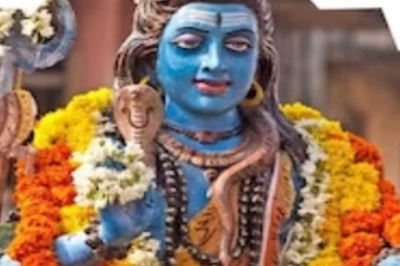
views
Three months before an American tourist was allegedly killed by the primitive Sentinelese tribe, the central government had reversed its ‘eyes on hands off’ policy and lifted restrictions to visit the island in a bid to boost tourism.
The North Sentinel Island is home to Sentinelese Tribe which remains one of the four surviving tribes of the Andaman Islands and one of the last remaining ones with no contact with the outside world. The US national, who was killed was identified as John Allen Chau (27). He was killed after he arrived on the island and faced a flurry of arrows.
In August, the union home ministry had removed the Restricted Areas Permit at 29 inhabited islands in the Andaman and Nicobar chain, with 11 inhabited islands also being thrown open to foreigners.
These 29 islands were excluded from the restricted area permit (RAP) notified under the Foreigners (Restricted Areas) Order, 1963, till December 31, 2022, subject to certain conditions. This, however, didn’t apply to citizens of Afghanistan, China and Pakistan.
An official had explained, at the time, “It is important to ensure the preservation of the natural and marine resources, including marine parks and the union territory. Which is why the guidelines issued by the Environment Ministry must be followed.”
However, the move had sparked controversy, with activists and journalists pointing out that there was a reason that these islands, particularly the North Sentinel Tribe, had been kept off limits.
The Sentinelese tribe remained isolated for years and, in fact, no census was conducted here until 1991. But this isolation also protected the tribe, argue experts while other tribes – such as the great Andamanese – suffered greatly due to incursions from outsiders.
“In spite of all this, why did the government decide to open up the North Sentinel Island for tourism? Once the government announces that the RAP had been done away with, and it’s open for tourism – what message does it send to the world,” asked Denis Giles, editor of the Andaman Chronicle.
“This particular American tourist might have known that the RAP had been relaxed and he might have ventured out as a result,” Giles added.
Opening up the Pandora’s Box
The move to lift the RAP was criticised by researchers and activists as hurried and short-sighted. Past incidents, including tragic death, were cited and consequently the Andaman and Nicobar Island administration issued a press statement arguing that there resulted a host of other protections for the residents of the tribes, and the environment.
The 29 islands now opened up for tourism include nine inhabited Nicobar Islands and two Andaman islands that are inhabited by Particularly Vulnerable Tribal Groups (PVTG) and the indigenous Nicobar Islanders. Giles argued that the choice of the islands appeared to imply that the government was trying to encourage ‘tribal tourism’.
“The government has reversed its policy of non-interference. These are tribes that have chosen to remain isolated. So why did the government of India take this decision? Does it not mean that it is trying to advocate ‘tribal tourism’,” he said.
Giles added that the tribe had repeatedly reacted to attempts to get on to the island by shooting arrows at intruders – a clear sign that they didn’t wish to be disturbed and were choosing to remain isolated.
In August 1981, a cargo ship got wrecked on the island and reportedly 50 islanders appeared, threatening the crew, necessitating a helicopter evacuation.
In the early 1990s, boats would initially be welcomed by the community before being threatened. A series of hostile encounters led to deaths with the Indian government finally ending contact expeditions in 1996 and adopting its earlier policy of non-interference.
The incident
A statement issued by Deputy Commissioner of South Andaman said that they received a mail from US consulate general in Chennai, informing the Indian authorities about the communication the consulate had received from Chau's mother.
"Mother of Mr John Chau informed that her son was purportedly attacked during his visit to North Sentinel Island here. Acting on the information, Andaman and Nicobar Police has registered a case of murder at Humfrigunj police station and arrested seven fishermen," it said.
Speaking to News18 from Port Blair, Deputy Commissioner of South Andaman, Udit Prakash Rai, said, "We have received information about the body of a foreign national at the remote Sentinelese Islands. The matter is under investigation." The local police are making efforts to recover the body.
The American national had made several trips to the Andaman Islands recently before finally managing to make it to the remote stretch by offering money to local fishermen in Port Blair's Wandoor area.
"He tried to reach the Sentinel Island on November 14 but could not make it. Two days later he went well prepared. He left the dingy midway and took a canoe all by himself to the island," sources told AFP.
"He was attacked by arrows but he continued walking. The fishermen saw the tribals tying a rope around his neck and dragging his body. They were scared and fled but returned next morning to find his body on the seashore."


















Comments
0 comment